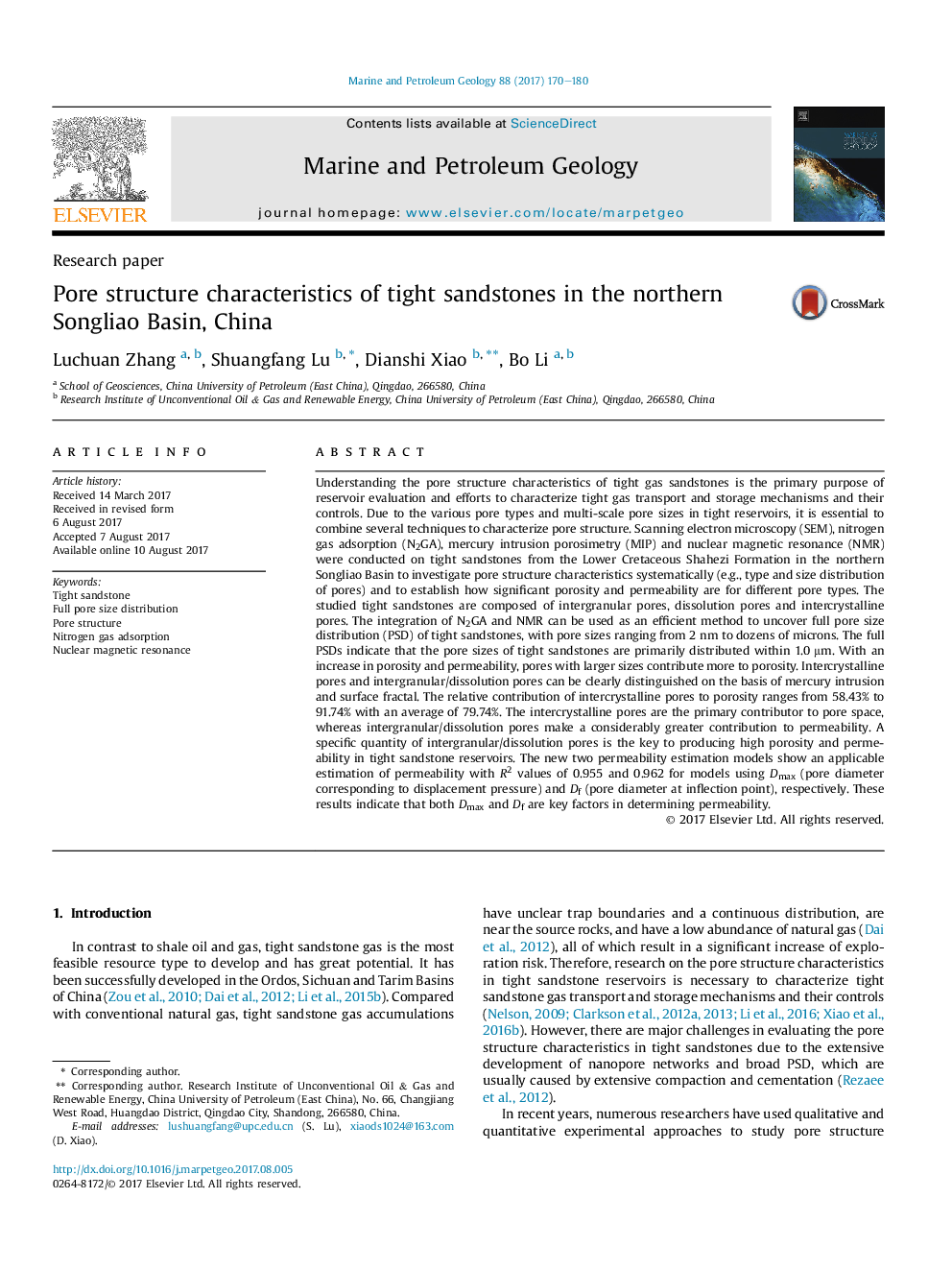| کد مقاله | کد نشریه | سال انتشار | مقاله انگلیسی | نسخه تمام متن |
|---|---|---|---|---|
| 5781919 | 1637139 | 2017 | 11 صفحه PDF | دانلود رایگان |
- Characterization of microscopic pore structure in tight sandstone samples using SEM, N2GA, MIP and NMR techniques.
- Full pore size distribution revealed by the integration of N2GA and NMR.
- The contribution of intercrystalline pores and intergranular/dissolution pores to porosity and permeability.
- Two new permeability estimation models using Dmax and Df.
Understanding the pore structure characteristics of tight gas sandstones is the primary purpose of reservoir evaluation and efforts to characterize tight gas transport and storage mechanisms and their controls. Due to the various pore types and multi-scale pore sizes in tight reservoirs, it is essential to combine several techniques to characterize pore structure. Scanning electron microscopy (SEM), nitrogen gas adsorption (N2GA), mercury intrusion porosimetry (MIP) and nuclear magnetic resonance (NMR) were conducted on tight sandstones from the Lower Cretaceous Shahezi Formation in the northern Songliao Basin to investigate pore structure characteristics systematically (e.g., type and size distribution of pores) and to establish how significant porosity and permeability are for different pore types. The studied tight sandstones are composed of intergranular pores, dissolution pores and intercrystalline pores. The integration of N2GA and NMR can be used as an efficient method to uncover full pore size distribution (PSD) of tight sandstones, with pore sizes ranging from 2 nm to dozens of microns. The full PSDs indicate that the pore sizes of tight sandstones are primarily distributed within 1.0 μm. With an increase in porosity and permeability, pores with larger sizes contribute more to porosity. Intercrystalline pores and intergranular/dissolution pores can be clearly distinguished on the basis of mercury intrusion and surface fractal. The relative contribution of intercrystalline pores to porosity ranges from 58.43% to 91.74% with an average of 79.74%. The intercrystalline pores are the primary contributor to pore space, whereas intergranular/dissolution pores make a considerably greater contribution to permeability. A specific quantity of intergranular/dissolution pores is the key to producing high porosity and permeability in tight sandstone reservoirs. The new two permeability estimation models show an applicable estimation of permeability with R2 values of 0.955 and 0.962 for models using Dmax (pore diameter corresponding to displacement pressure) and Df (pore diameter at inflection point), respectively. These results indicate that both Dmax and Df are key factors in determining permeability.
Journal: Marine and Petroleum Geology - Volume 88, December 2017, Pages 170-180
